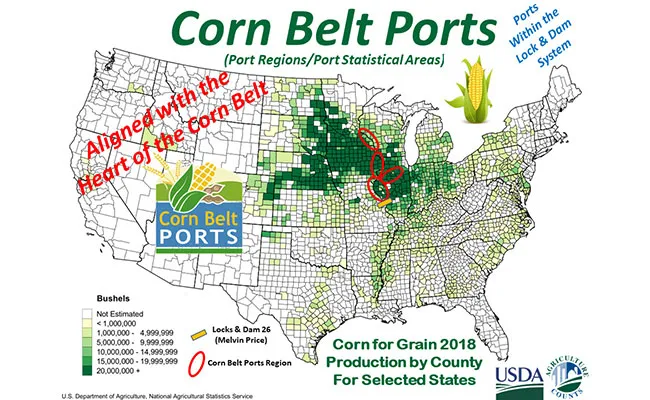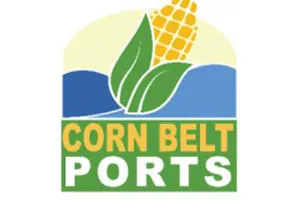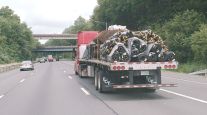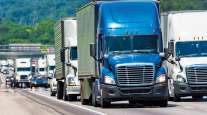Staff Reporter
Inland Corn Belt Ports Seek Infrastructure Funds, More Freight

[Stay on top of transportation news: Get TTNews in your inbox.]
Increasing freight capacity and attracting more infrastructure investments are likely outcomes of a recent federal designation expanding the inland Corn Belt Ports to span five Midwestern states.
“We’re part of the multimodal transportation network. We’re trying to improve the network so it is beneficial for all users, and we want to increase funding opportunities to include the last mile to the waterways,” said Robert Sinkler, executive coordinating director of Corn Belt Ports.
Some of the inland ports with loading terminals dotting shorelines have been handling agriculture for over a century in Illinois, Iowa, Minnesota, Missouri and Wisconsin but lacked a federal port designation enabling the tracking of cargo data.
“Roughly 300 ports are recognized by the U.S. Department of Transportation and among these are just a handful of inland, linear ports. Four of those are in the Corn Belt Ports’ region,” Sinkler said. “Because we’re a commodity region, efficiency is not measured by ton miles necessarily. It’s really how close is a terminal to where grain is grown. You don’t want a truck to haul grain very far. It’s just not efficient to do that.”

Sinkler
These inland ports are located along a 200-mile segment of waterways and consist of private grain-handling terminals distributed in areas where grain is grown and produced.
“Geography plays a part in this because the waterways are long, skinny, narrow transportation features that you just can’t concentrate enough barges in one area,” Sinkler said. “It’s just geographically impossible. The only solution is to distribute waterborne commerce infrastructure along the waterway because it cannot physically be concentrated in one location unlike some of the large coastal ports, where you have a large bay or natural harbor so you can just move a lot of ships in and out of.”
In December, Corn Belt Ports received federal approval for the last of four inland ports to rank among national ports by the U.S. Army Corps of Engineers’ Waterborne Commerce Statistics Center and Civil Works Decision Support Center in an effort that began in 2019.

“It is hard to invest in a port that doesn’t exist, so the Corn Belt Ports team is very glad that the Northern Grain Belt Ports are now finally on the map,” Sinkler said. “Navigable waterways without inland ports are just a big river, but navigable waterways with inland ports are an essential part of our national and global supply chains. Farmers in the region did need a federally recognized port of loading.”
Located along Interstate 90 along the upper Mississippi River between Wisconsin and Minnesota, Northern Grain Belt Ports has 34 regional terminals and now joins the other three Corn Belt Ports, which area centered on interstate highway intersections.
- Mid-America Port Commission (MAPC) in Iowa, Illinois and Missouri at Interstate 72
- Upper Mississippi River Ports (UMPR) in Illinois and Iowa along I-74, I-80 and I-280.
- Illinois Waterway Ports (ILWW) at I-39, I-55, I-74, I-80, I-180 and I-474.
“The trucking industry is very important to us. When you look at the amount of tonnage and grain handled in that area, everything gets hauled to the terminals by truck,” Sinkler said. “There is a tremendous amount of involvement from the local trucking companies in the whole concept of the Northern Grain Belt Ports, and that, too, hadn’t really been recognized in some circles because the federal designation was not there.”

Wallace
Total freight tonnage handled by the Northern Grain Belt Ports has not been recorded yet since the federal port designation was recent. However, port designations have resulted in 2020 annual data being captured for the MAPC (15 million tons), ILWW (14.9 million tons) and UMPR (8.4 million tons).
“Understanding important navigation metrics such as annual freight tonnage information shipped from ports and terminals enables us to make informed decisions on a wide range of issues,” noted Kirsten Wallace, executive director of the Upper Mississippi River Basin Association.
Since 2021, the Corn Belt Ports have captured $1.25 billion in transportation and natural infrastructure investment from federal and state government organization, and nonprofits.

Chris Smith, Corn Belt Ports operations director, said port designations in rural areas are important to increasing capacity and gaining needed infrastructure funding, especially since the inland ports rely on an aging lock and dam system.
The lock and dam system forms a bridge between navigation pools enabling barges and tow boats to move from one navigation pool to another.
“Right now, they are trying to cram a 15-barge tow to a bridge basically that was designed for steamboats so they actually have to decouple barges to use the existing infrastructure and then recouple them back together after they get on the other side of the lock,” Sinkler said. “They are trying to drive barges across a bridge that was built in the 1930s for steamboats that no longer exist.”

Host Seth Clevenger speaks with Torc Robotics CEO Peter Vaughan Schmidt about the realities of autonomous truck technology and how they fit into the freight transportation industry. Hear the program above and at RoadSigns.TTNews.com.
Second of a three-part series on autonomous vehicles. Hear Part I here. Part III coming Feb. 2.
Only one of seven locks needing modernization has been funded with $732 million in federal infrastructure funds.
Sinkler said Corn Belt Port waterways are underutilized and could carry freight besides agricultural goods.
“There is a lot more opportunity to move freight to waterways without building new infrastructure. It’s under capacity right now,” he added. “Many of the wind turbines used in the Midwest are transported by barge since it’s easier because they’re so large. There’s a lot of products like that you can move more of those to the waterways.”
Want more news? Listen to today's daily briefing below or go here for more info:




